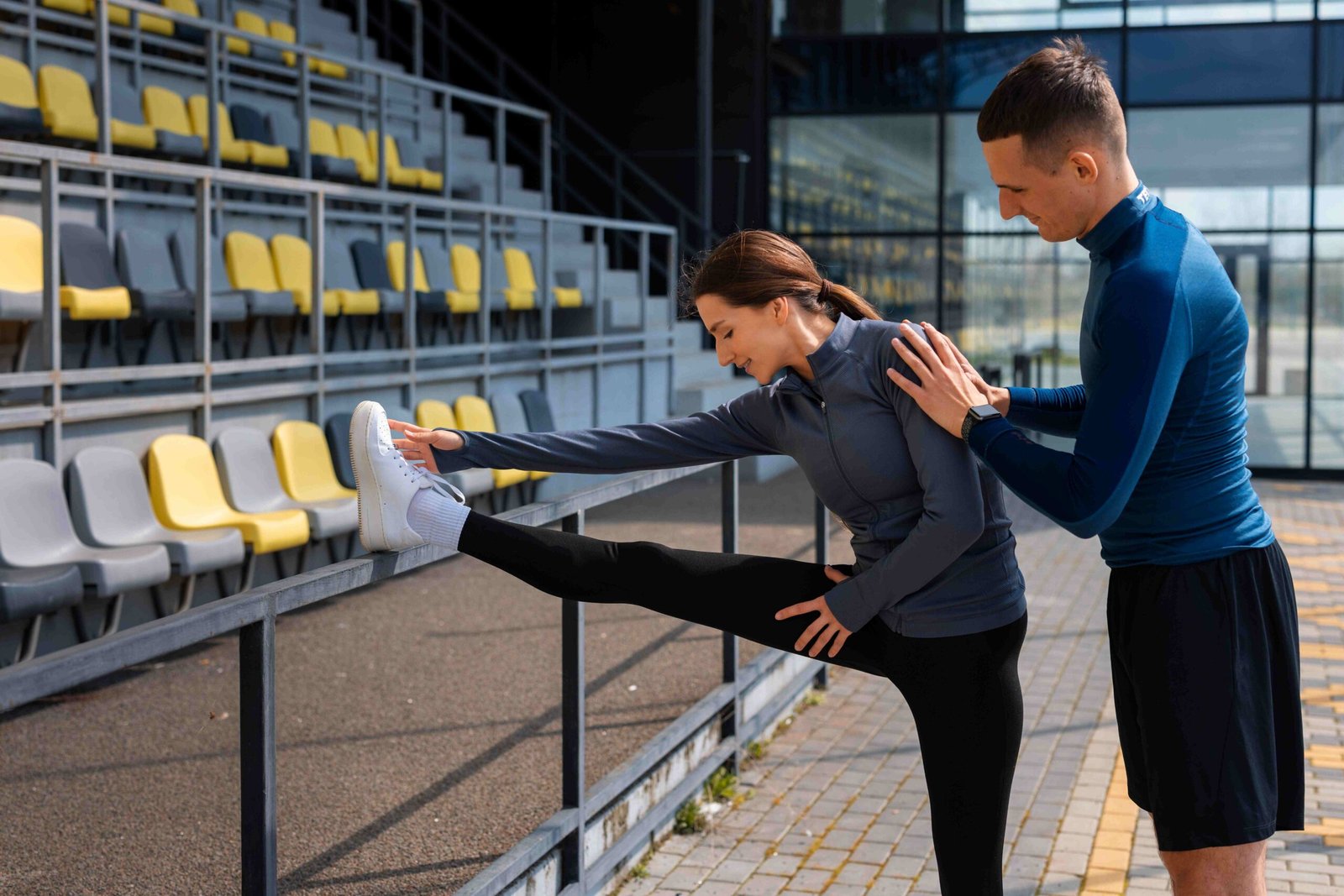When athletes step onto a court, their performance depends not only on their skills but also on the surface beneath their feet. Whether it’s a basketball player making a powerful jump shot, a volleyball player diving for the ball, or a badminton player pivoting for a smash, every move involves impact forces transferring through the body. The quality of sports flooring plays a critical role in absorbing these forces and protecting the joints, muscles, and spine of athletes.
The core concern for facility managers, schools, and sports organizations is simple: “Will this floor provide adequate cushioning to protect players’ joints (ankles, knees, back) from the stress of jumping and landing, reducing the risk of injury?”
This blog will explore how shock absorption and impact protection work in sports flooring, why they matter for long-term athlete safety, the science behind cushioning, and what decision-makers should look for when choosing the right floor for their facility.
Why Shock Absorption Matters in Sports Flooring
1. The Hidden Forces in Every Movement
Sports involve repetitive movements—running, jumping, pivoting, and landing—that exert constant pressure on the body. For example:
- A basketball jump can generate impact forces of up to 5–7 times an athlete’s body weight when landing.
- In volleyball , athletes jump hundreds of times in a single match, placing enormous stress on the knees and ankles.
- Even in badminton and table tennis , the quick side-to-side motions create continuous micro-impacts on joints.
Without proper cushioning, these forces accumulate and increase the risk of injuries such as:
- Ankle sprains
- Patellar tendinitis (jumper’s knee)
- Shin splints
- Lower back strain
- Early-onset joint problems
2. Long-Term Health vs. Short-Term Performance
While athletes often focus on performance, flooring has a long-term health implication. A floor with poor shock absorption may not immediately cause visible injury, but over months or years, it can contribute to chronic joint pain and mobility issues . This is especially important in schools and community gyms, where athletes of all ages—especially children and older adults—use the facility.
The Science Behind Shock Absorption
1. How It Works
Shock absorption is the ability of the floor to dissipate impact energy when an athlete makes contact with it. Instead of sending all the energy back to the body (which stresses the joints), a well-designed floor absorbs and redistributes part of the force.
This involves three key mechanisms:
- Surface Elasticity : The top layer flexes slightly, providing cushioning.
- Force Distribution : Impact is spread across a wider area to reduce pressure points.
- Energy Return : Some energy is returned for responsiveness, while the rest is absorbed to reduce stress.
2. Standards and Measurements
Sports flooring shock absorption is usually measured using international standards, such as EN 14904 for indoor sports surfaces. According to this standard:
- Flooring should provide a minimum shock absorption rate of 25% , with high-performance floors offering 35–55%.
- Too little absorption leads to joint stress, while too much can feel “spongy,” reducing athletic performance.
Impact Protection: Safeguarding Joints and Muscles
1. Ankles
Ankles are the first point of contact in most sports movements. Without cushioning, athletes face repeated microtraumas that increase the risk of sprains and ligament tears. Sports floors with adequate impact protection reduce this risk by stabilizing foot contact and absorbing sudden impact loads.
2. Knees
The knees endure some of the highest forces, especially during jumping and landing. Proper shock absorption reduces the strain on the patellar tendon and cartilage , minimizing the chances of long-term issues such as arthritis or “jumper’s knee.”
3. Spine and Back
Hard landings without cushioning send forces directly upward through the spine. Over time, this can lead to lower back pain or even disc-related problems. High-quality vinyl sports flooring acts as a buffer, ensuring spinal health while maintaining performance efficiency.
Comparing Flooring Types for Shock Absorption
1. Hardwood Flooring
- Pros : Traditional, aesthetic appeal, good ball bounce.
- Cons : Limited shock absorption unless paired with a subfloor system; higher maintenance costs.
2. Vinyl Sports Flooring
- Pros : Engineered with cushioned layers that provide superior shock absorption; consistent performance; resistant to wear and tear; lower maintenance.
- Cons : Some players may prefer the traditional feel of hardwood.
3. Rubber Flooring
- Pros : Excellent for gyms and fitness areas; strong impact absorption.
- Cons : Less suitable for competitive sports requiring fast ball bounce (eg, basketball).
4. Multi-Layered Synthetic Systems
- Combine vinyl, foam backing, and reinforced layers to balance cushioning, stability, and energy return —ideal for multi-purpose facilities.
For most indoor sports facilities, vinyl sports flooring offers the best balance of shock absorption, durability, and cost efficiency .
Factors That Influence Shock Absorption Performance
- Flooring Thickness – Thicker layers generally provide better cushioning but must balance with playability.
- Subfloor Design – A sprung subfloor enhances impact protection compared to concrete bases.
- Material Quality – Eco-responsible, high-quality vinyl ensures consistent performance over time.
- Installation Quality – Even the best flooring won’t perform well if installed improperly.
- Maintenance – Regular cleaning and inspections ensure the surface remains responsive and safe.
Case Examples: Sports That Depend on Cushioning
Basketball
Players make frequent high jumps and landings, putting immense stress on knees and ankles. Shock-absorbing vinyl flooring ensures safety while maintaining ball bounce consistency.
Volleyball
Constant jumping and diving make impact protection critical. A cushioned surface reduces fatigue and injuries across long matches.
Badminton
Quick lateral movements demand stability, while cushioned flooring prevents ankle and knee strain during sudden changes in direction.
Table Tennis
Though less impact-intensive, players still benefit from a supportive floor that reduces micro-stress during fast, repetitive movements.
How Poor Shock Absorption Affects Athletes
- Increased Injury Rates – Floors that lack cushioning correlate with higher instances of sprains and overuse injuries.
- Reduced Performance – Athletes may subconsciously limit their movements to avoid discomfort, affecting game performance.
- Faster Fatigue – A rigid surface accelerates muscle fatigue, reducing stamina and efficiency.
- Long-Term Damage – Repeated exposure to hard landings contributes to degenerative joint diseases.
Choosing the Right Flooring: Key Considerations
When evaluating sports flooring, facility managers should ask:
- What is the shock absorption percentage?
– Aim for at least 25–35% for general use, and higher for professional facilities. - Does it balance cushioning and energy return?
– Too much cushioning can reduce responsiveness, while too little increases injury risk. - Is the flooring certified?
– Look for standards such as EN 14904, BWF, ITTF, or FIBA certifications. - What sports will be played?
– Multi-sport facilities require versatile flooring that supports different impact levels. - What is the durability and maintenance requirement?
– Flooring should last years under heavy use without losing its cushioning performance.
The Role of Boker Sports Flooring
At Boker Sports Flooring, shock absorption and impact protection are at the heart of product design. With over 20 years of experience and sales in 60+ countries, Boker has refined flooring systems that ensure:
- Optimal joint protection for athletes of all ages.
- Balanced energy return to enhance performance.
- Durability to withstand years of use in schools, gyms, and professional sports halls.
- International certifications that guarantee compliance with global safety standards.
The Joyfull Series and Trioflex Series are engineered with advanced cushioning layers, making them ideal for facilities seeking the perfect combination of safety, comfort, and playability .
Conclusion
Shock absorption and impact protection are not optional features —they are the foundation of athlete safety and long-term performance. Every jump, sprint, and landing places stress on the body, and the right sports flooring can mean the difference between a thriving athlete and a career-limiting injury.
Facility managers, schools, and sports organizations should prioritize flooring that:
- Meets international safety standards .
- Provides adequate cushioning without compromising performance .
- Ensures long-term durability and cost efficiency .
By choosing high-quality vinyl sports flooring , such as the solutions offered by Boker Sports Flooring , decision-makers can create environments where athletes not only perform at their best but also stay protected from the silent dangers of repeated impact.
The next time you ask, “Will this floor provide adequate cushioning to protect players’ joints?” —remember that the answer lies in the science of shock absorption and the commitment to athlete safety.



